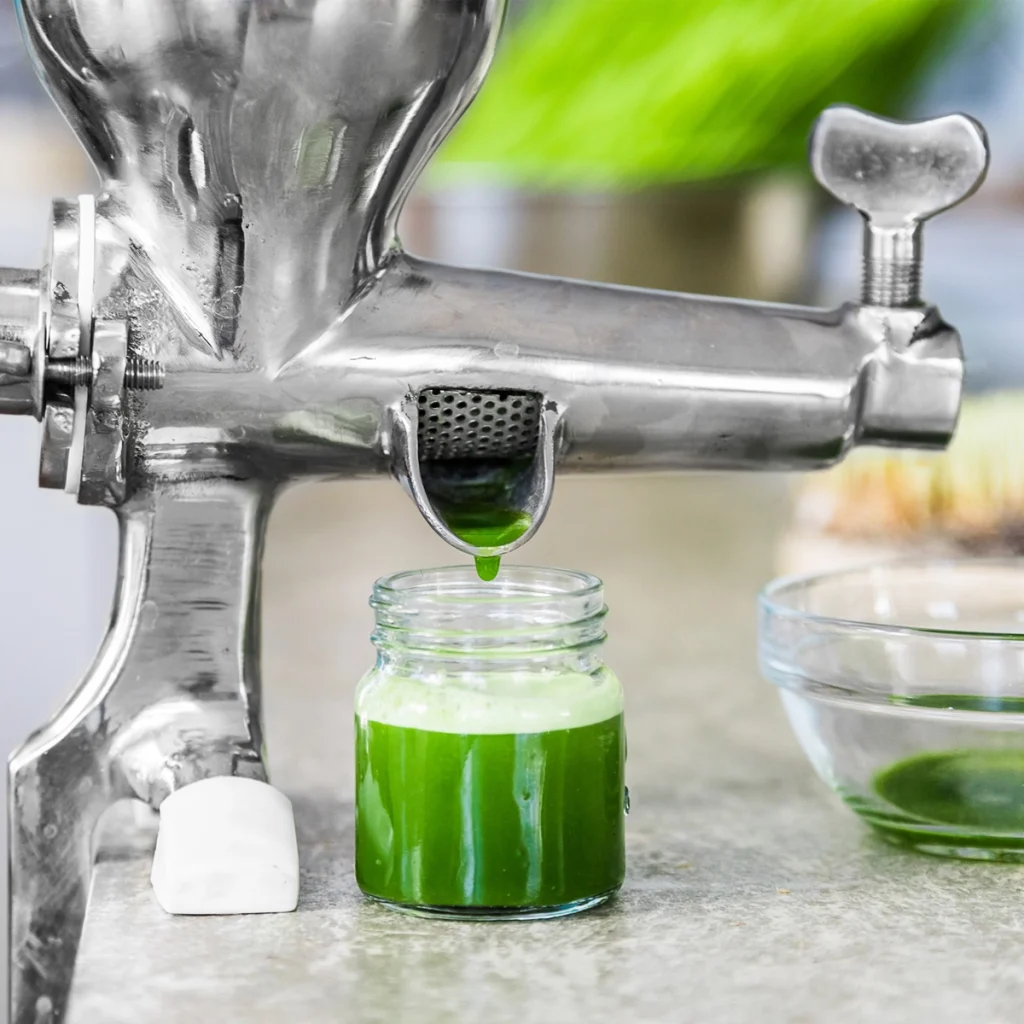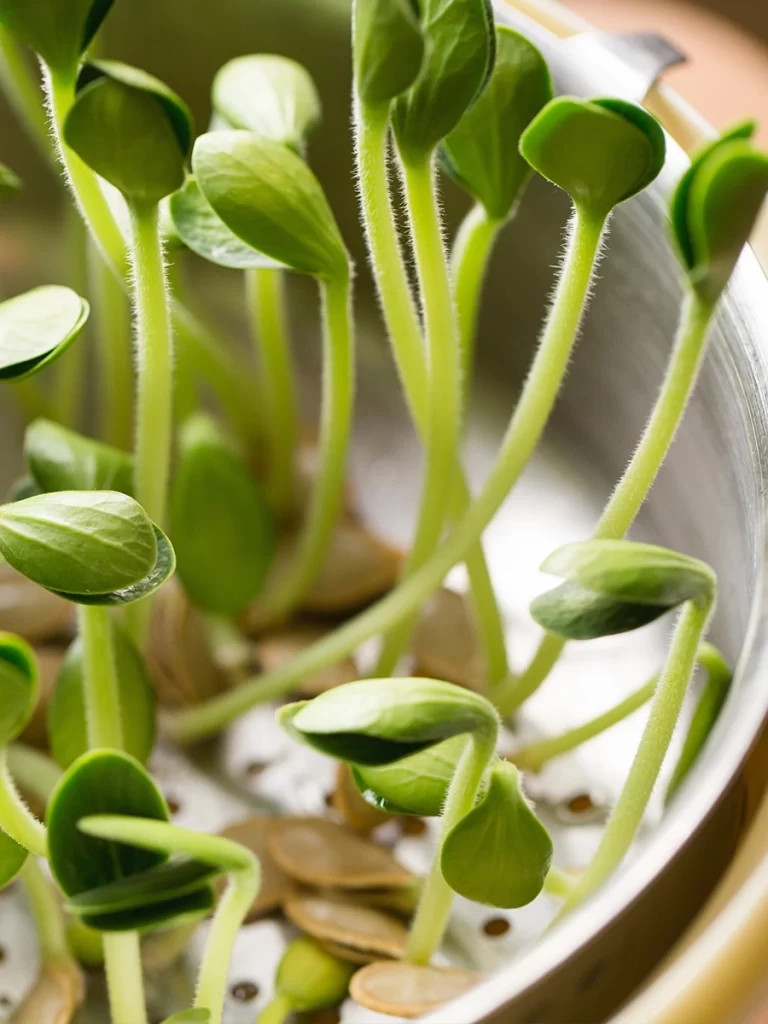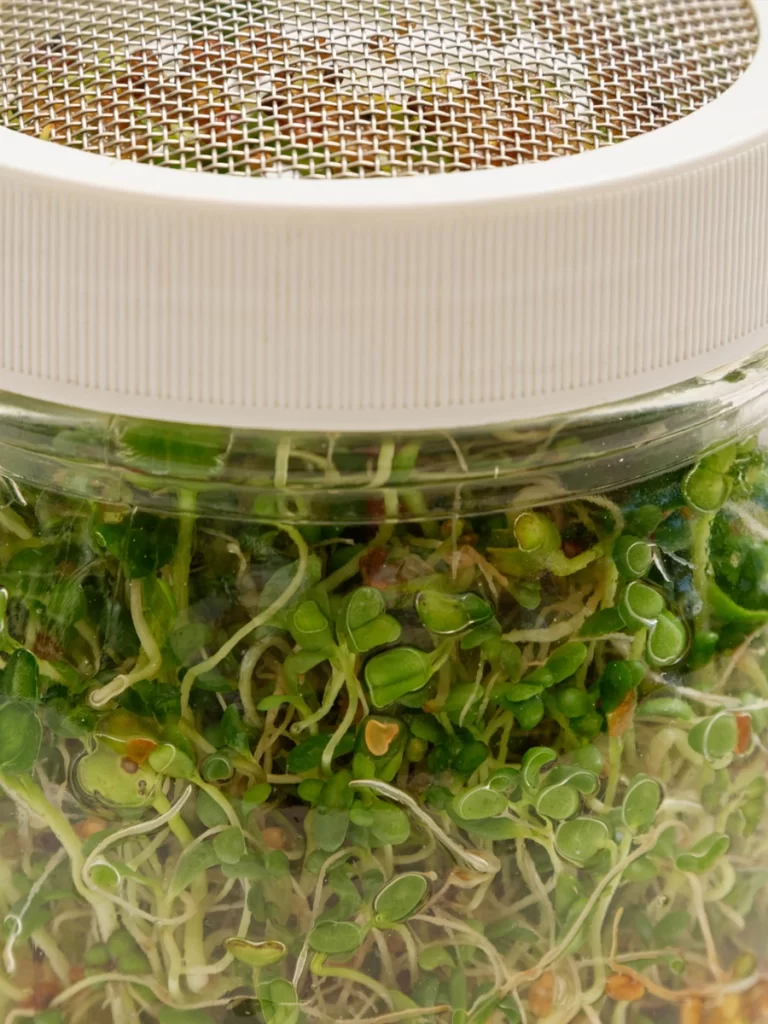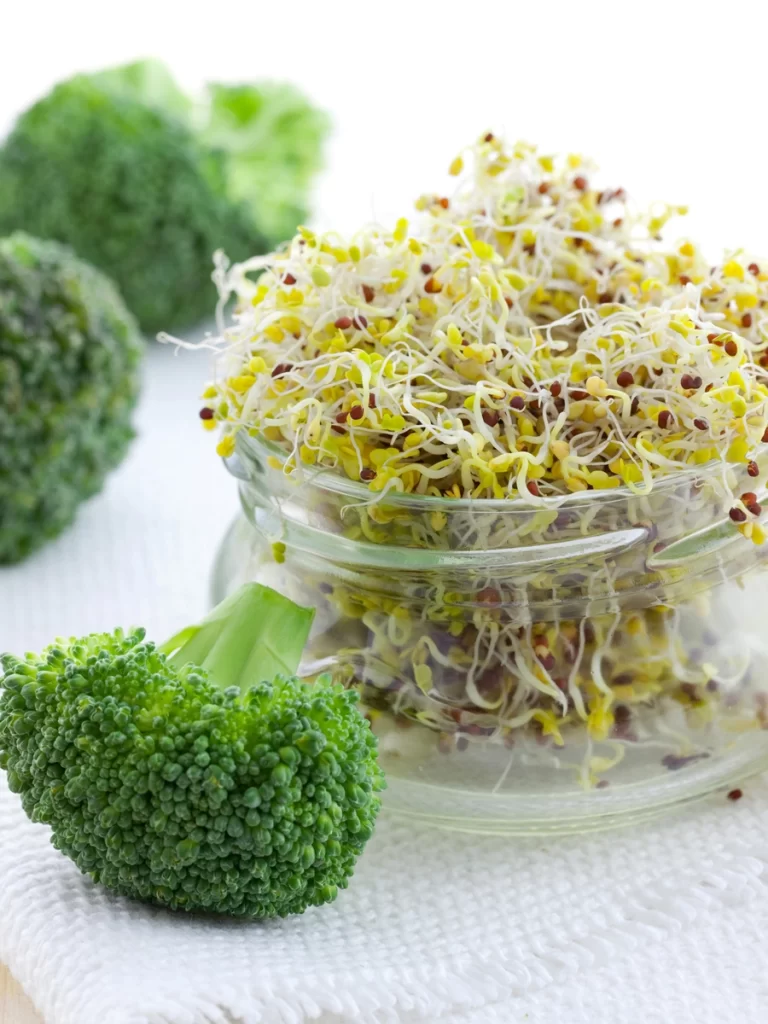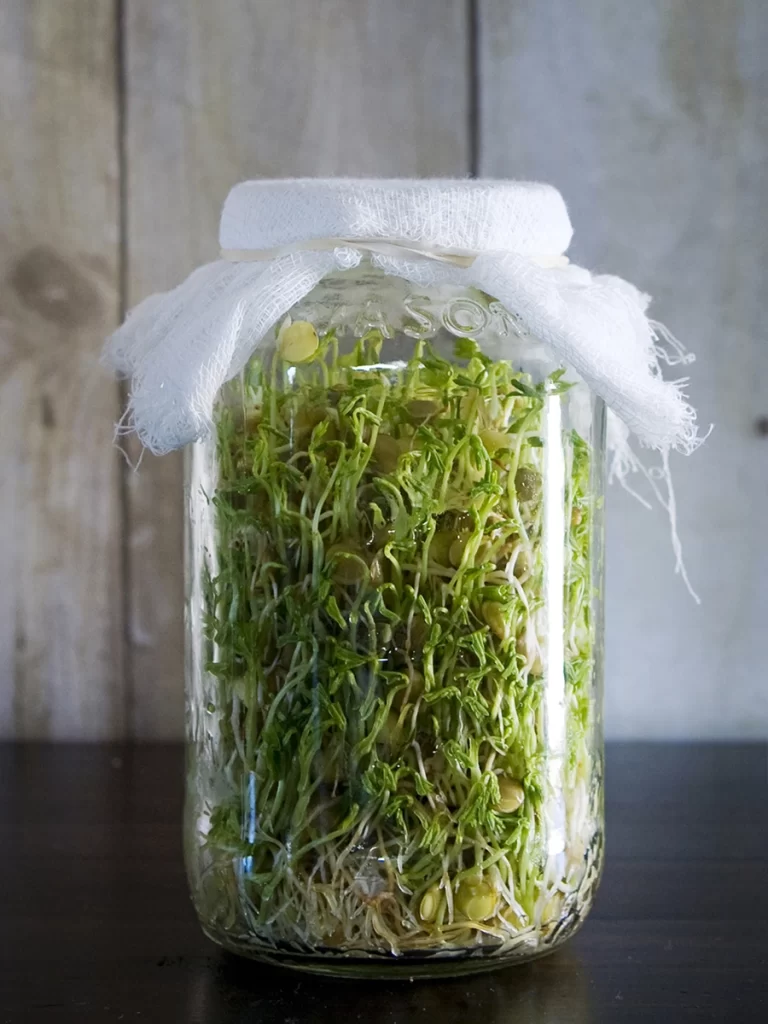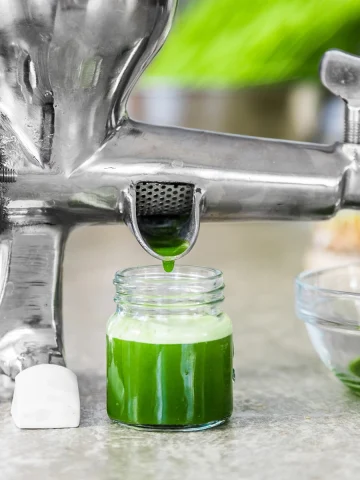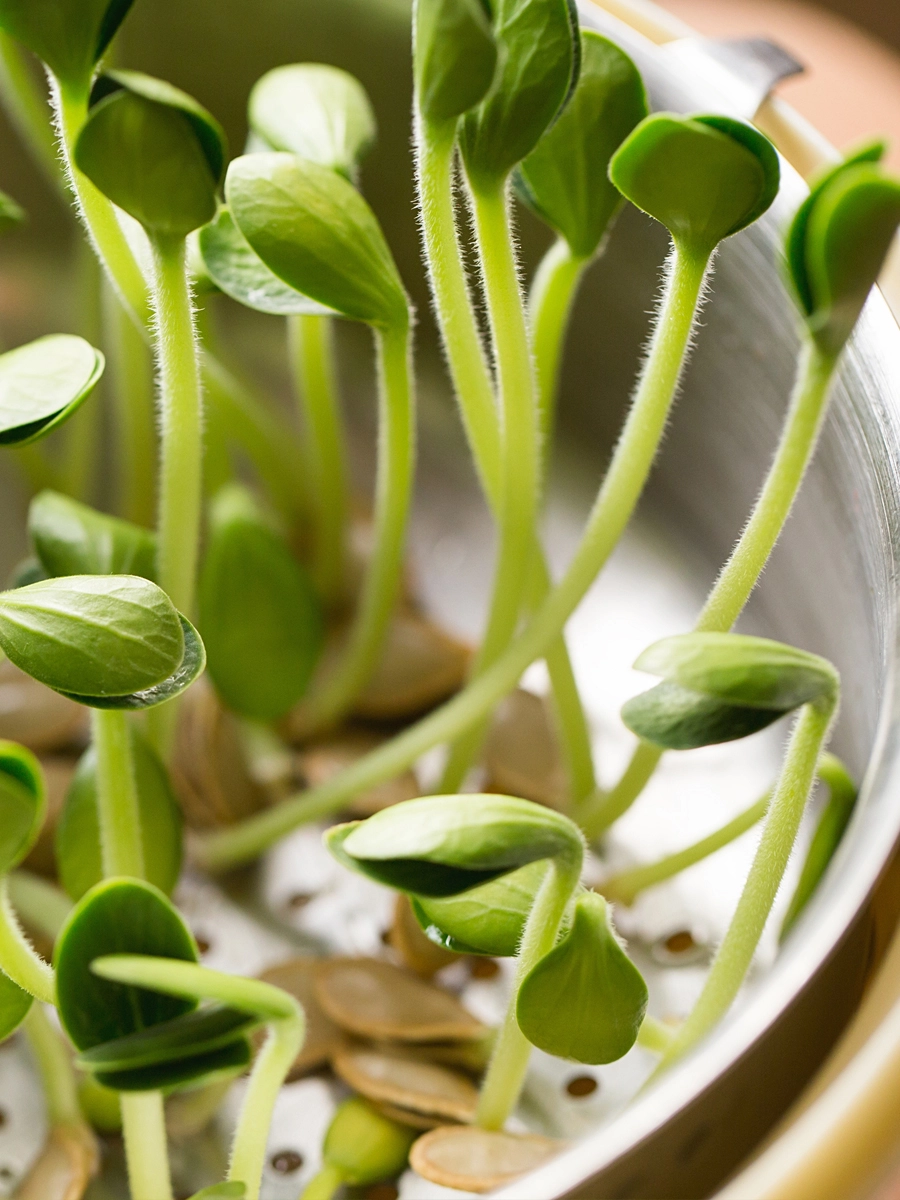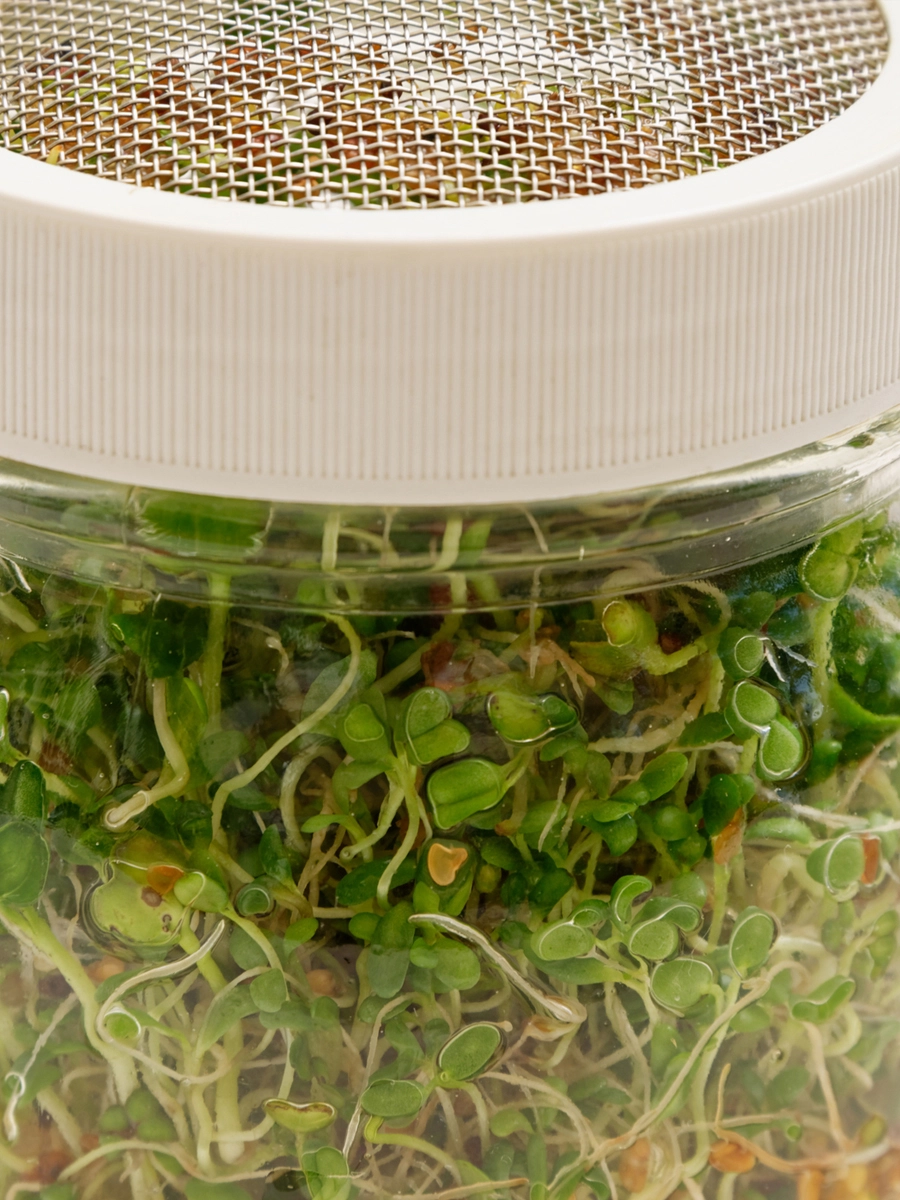This post shares an easy, step-by-step guide for growing chia sprouts from chia seeds. It only takes a few days to grow your superfood sprouts! You will learn everything from sprouting chia seeds in a terra cotta dish, picking the right seeds, and much more.
How To Sprout Chia Seeds: The Miracle Food of the Ancient Aztecs
Chia sprouts have been a staple food of the Aztecs since before the time of the Mayans. Prized as one of their miracle foods, chia sprouts have been used as an alternative to meat to provide people with healthier diets.
Today, chia sprouts remain as revered as ever and are available in health food stores worldwide. However, growing them can be an even better option if you want to save money on your organic food budget and eat healthier.
What are Sprouted Grains?
When sprouted, chia seeds transform into something almost unrecognizable; not only do they become incredibly nutritious and full of antioxidants, but they also taste great.
You can quickly create delicious baked goods like muffins or cookies when used in healthy breakfast cereal or ground up into flour.
These are especially important if you're watching your weight—unlike grains harvested and milled before being shipped to grocery stores, sprouted chia seeds take a while to digest.
They make you feel fuller for more extended periods; just a handful is enough to satisfy your hunger pangs!
Moisture. Chia seeds require moisture to sprout, but since they are mucilaginous seeds, they form a protective chia gel sac that inhibits sprouting when soaked in water.
You only need to mist the seeds or place them on a porous, damp surface. They cannot be grown using the standard mason jar method.
Use a growing tray or dish that has good drainage. Avoid standing water and pools of water.
How to Sprout Chia Seeds in a Terra Cotta Dish
We recommend the dry seed method to make these superfood sprouts at home. This method uses a terra cotta plate rather than a mason jar.
Terracotta is an earthy, porous material that enables proper airflow. This avoids the moistness of your chia seeds and lessens the chances of bad sprouts.
If you don't have terracotta, you can also use a glass dish, but make sure to monitor the moisture levels of your chia.
By following the dry seed method, you will get a soft and tender plant that can be eaten as a whole.
What Will You Need To Sprout Chia Seeds?
- Spray bottle with clean, drinkable filtered water
- A clean terracotta plate
- A clear plastic clamshell lid, a glass Pyrex pie dish, or a plastic bag to create a greenhouse effect
- Organic chia seeds
Sprouting Guide
- On a clean terracotta dish, add a few teaspoons of chia seeds to cover the bottom of the dish with a thin single layer of chia seeds. Don't let them overlap. You can start with just one teaspoon and add teaspoons as you spread the chia seeds evenly.
- Thoroughly spray chia seeds with a spray bottle and let them sit for an hour to soak up water. Give the solution a quick spray after 1 hour.
- Place the cover (a clear plastic clamshell lid, a glass Pyrex pie plate, or a plastic bag) over the terracotta dish to keep the humidity inside. Keep the seeds sprouting in a warm area, away from direct sunlight. Leave the protective layer on for the first few days. You can remove the cover when you see the plant grow a little more.
- Give the chia seeds a good misting of water two times a day, and they'll start growing as early as day two or three.
- Harvest when sprouts are between 1-2 inches in length (1 to 5 centimeters). Harvesting time will depend on how long you wait, but the minimum time to harvest sprouts will be between 2-7 days.
How To Grow Chia Seeds on a Paper Towel
- Place two sheets of folded paper towels into the bottom of a shallow dish or tray.
- Add water to the tray until the paper towel is moist but not drenched.
- Sprinkle the chia seeds over the moistened paper towel. Do not overlap the seeds.
- Check the seeds twice daily and spray with water to keep the paper towel moist. Do not let it dry out.
- When the seeds begin to sprout, place the tray on a kitchen counter away from direct sunlight.
How To Sprout Chia Seeds With A Grow Mat
Technically when you grow chia seeds using a growing medium such as a grow mat or coconut coir, they are considered chia microgreens.
The difference between sprouted seeds and microgreens
Sprouts are eaten whole, the root, shoot, and leaf. They are grown without a medium.
While microgreens, you only eat the shoot and leaves since microgreens are harvested just above the soil line.
Sprouting Chia seeds on a hydroponic growing pad
- Lay the Micro-Mats hydroponic growing pad in the tray. For best results, do not use too much water. You do not want to soak them.
- Spray a fine mist of water onto the pad.
- Sprinkle a layer of chia seeds on top of the pad —mist seeds lightly with fresh, clean water.
- Cover with another plate. Mist lightly once per day.
- Chia sprouts are ready to harvest in 2-3 days.
- NATURAL and ORGANIC: 5 X 5 Hemp grow mats for microgreen seeds provide a natural, biodegradable alternative to synthetic seed sprouting mats, made from 100% organic fibers without the use of binders or chemicals.
- HEALTHY CLEAN MICROGREENS: Grow nutrient-rich microgreens with Terrafibre Hemp Mats, made from natural and organic hemp fibers and offer a clean final cut when they are ready for harvest. Hemp sprouting mats are perfect organic gardening supplies for your microgreens growing kit.
- ECO-FRIENDLY: Our hemp mats offer a sustainable alternative to rockpool, peat moss, or coconut grow mats. Industrial hemp fibers are cleaned, separated, then needle punched into a reinforced backing to produce a 100% biodegradable growing medium.
- STRONG ROOT GROWTH: Our sprouting tray mats encourage faster germination and root growth, enjoy healthier and more robust plants growing in your sprouts growing kit. Excellent choice for hydroponic growing microgreens, micro herbs, sprouts and other short rotation crops.
- SUPERIOR WATER RETENTION: The natural fibrous texture of our grow mats provides excellent water retention, ensuring your micro greens seed stay hydrated throughout the growing process.
Last update on 2025-05-18 / Affiliate links / Images from Amazon Product Advertising API
How to Store Chia Sprouts
When it's time to harvest chia sprouts, place them in a colander and gently rinse. Allow sprouted chia to dry before storing them in the refrigerator.
Chia sprouts have a relatively short shelf life, while they can last up to one week in the refrigerator.
Although, like most sprouts, they taste best when eaten fresh or within 2-3 days.
Store the chia sprouts in a container with proper airflow. Try these storage containers (amazon link) made by Rubbermaid. They have a handy FreshVent technology that regulates airflow.
If you are growing chia microgreens in soil or the grow mat, snip them with a pair of scissors just above the soil line.
How to Pick the Right Chia Seeds for Sprouting
Choosing the right seeds for sprouting will determine how well the process will go.
Here are some guidelines to take under consideration:
- You'll want to check if seeds have been chemically treated. You should find organic chia seeds for sprouting.
- Refrain from toasted or roasted seeds or grains. This process can destroy certain nutritional values of the seeds.
- Avoid cracked or milled seeds.
- Purchase the seeds in vacuum-sealed packages.
- Avoid getting your sprouting seeds from bulk bins.
- Search for the word 'sproutable' on the package.
Aside from these simple guidelines, you must buy from trusted brands like True Leaf Market.
This is one of the top brands that offer high-quality seeds that are not only organic and affordable but also contain no GMOs. Check out their organic chia microgreen seeds here.
Try These Easy Seed Sprouting Recipes:
Can You Sprout Chia Seeds From The Grocery Store?
Yes, you can! Buying chia seeds from a local supplier or a grocery store is fine. You only need to keep an eye out for whether or not the chia sprouts are organic.
Today, chia seeds can be found in health food stores across America. While eating them is a great way to add nutrients and fiber to your diet, eating non-organic chia seeds can potentially contaminate you with toxic pesticides.
With more and more scientific evidence emerging about pesticide toxicity, we must consider our exposure whenever possible.
We personally only buy organic foods, including my organic chia seeds.
Health benefits of Chia Seeds: Sprouted vs. Unsprouted
Some chia seeds are sprouted, and some are not, so what's the difference?
Chia seeds are obtained from Salvia hispanica plants native to Southern Mexico and Guatemala.
These little seeds have been part of the diets of several Mayan civilizations for centuries and were consumed by the Aztecs before they came into contact with the Spanish conquerors in the 1500s.
Today, you can purchase chia seeds in sprouted and unsprouted forms in health food stores and online retailers. But is there a reason why you should choose one over the other?
Sprouted Chia is Highly Nutritious
Amazingly, you can create a power source for your body from one seed. Sprouting makes these tiny seeds much more nutritious, but they still have numerous health benefits even without growing into plants.
Chia seeds are abundant in omega-3 fatty acids and dietary fiber. One tablespoon contains 8 grams of total fat, most of which are unsaturated, which means that they lower LDL cholesterol in your body and boost HDL (the good kind).
Dietary fiber helps to clean out your digestive tract and prevent constipation.
They're also high in antioxidants like beta-carotene and lutein that promote eye health and prevent macular degeneration. So many nutrients in so little space!
However, sprouting helps break down the outer layer of seeds, making them more digestible, absorbable, and nutritious.
Otherwise, some nutrients may be locked inside of the seed, causing it hard for our body to obtain.
They may be hard to digest and absorb if our body obtains them. This is one of the significant health benefits of choosing sprouted chia seeds rather than unsprouted.
The sprouts simply have more available nutrients than their fully-grown counterparts from the same plant.
Related Topic: Best Books on Gut Health
May Strengthen The Immune System
Sprouted chia seeds are exceptionally high in beta-carotene, which helps strengthen our immune system. Beta-carotene is also a precursor to vitamin A, essential for eye health, and can help reduce the risk of certain cancers.
Vitamin C is another important nutrient found in chia seeds that helps fight off colds and other illnesses—and it may even improve brain function and slow aging.
Research suggests that older adults who eat diets rich in vitamin C have higher scores on cognitive tests than those who don't consume as much of it.
Other research suggests that chia seeds also contain calcium, an essential mineral for strong bones and teeth—which means they may be able to lower your risk for osteoporosis later on in life.
May Support Weight Loss
Chia is rich in fiber, making it an excellent choice for weight loss because it helps you feel full and keeps your blood sugar levels stable.
One study showed that individuals who ate a meal containing chia felt significantly fuller than those who ate one without it.
Other studies suggest that eating more fiber may boost metabolism, helping you burn fat faster. Chia also contains good fats known as omega-3 fatty acids, linked to heart health and other health benefits like improved brain function and lowered inflammation.
How To Eat Chia Sprouts
Chia sprouts have a delicious and tangy taste and add variety and spice to salads, sandwiches, soups, spreads, salsa, dips, and appetizers.
They are best used raw or added to soups just before serving, do not cook them entirely because the heat will destroy the nutrients.
White Chia Seeds vs. Black Chia Seeds
When shopping for chia seeds, you may have noticed two types of seeds, black and white.
Black chia seeds are more common, but there aren't many differences.
Black chia seeds have slightly more protein content, while white ones have slightly more Omega-3s.
Did I cover everything you wanted to know about how to sprout chia seeds in a terra cotta dish?
In this article, I looked at the world of sprouting chia seeds.
We explored a few different ways of sprouting chia seeds. But we also looked at how to buy the best and most healthy chia seeds.
Chia sprouts are one of nature's most healthy foods and are straightforward to grow.
All you need is a terracotta dish, a water sprayer, and a plastic bag to create the perfect environment for the sprouting of chia! Then, you can start seeing effects in as little as 4-7 days.
Our post reminds us that choosing the right sprouts is just as important as the process itself. Make sure to choose organic seeds from a trusted source.
Organic sources will ensure that they do not have harmful chemicals and pesticides. This way, you'll be able to get the most out of sprouting.
If you're looking to buy any equipment for sprouting grains or fermenting foods, don't forget to check out my Recommended Products Page, which breaks down all my best picks by category.
I always hand-select items I own, have used, or have researched well to ensure they are great products. I also give not only top-of-the-line but also inexpensive alternatives, so my choices work for any budget.


